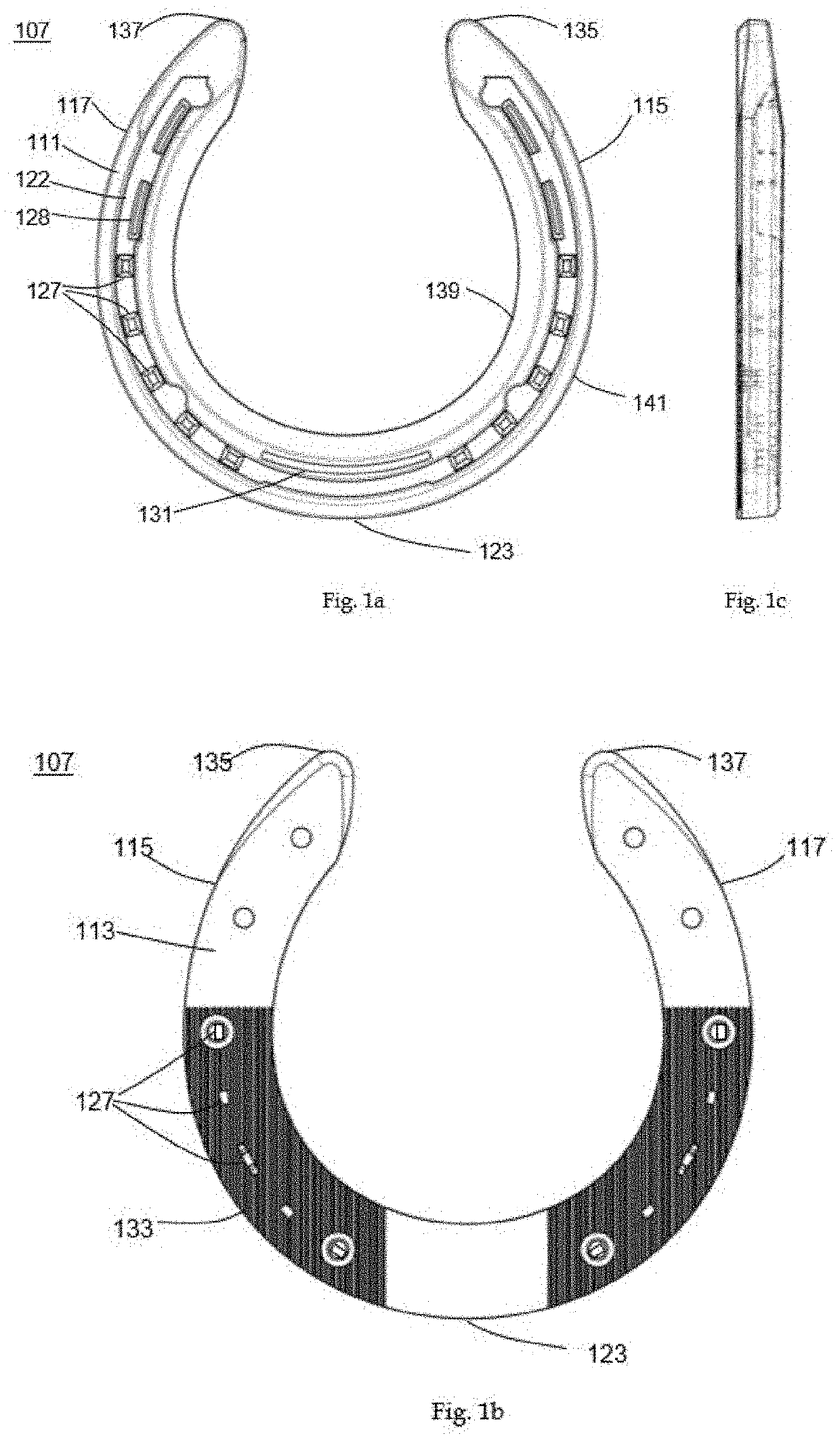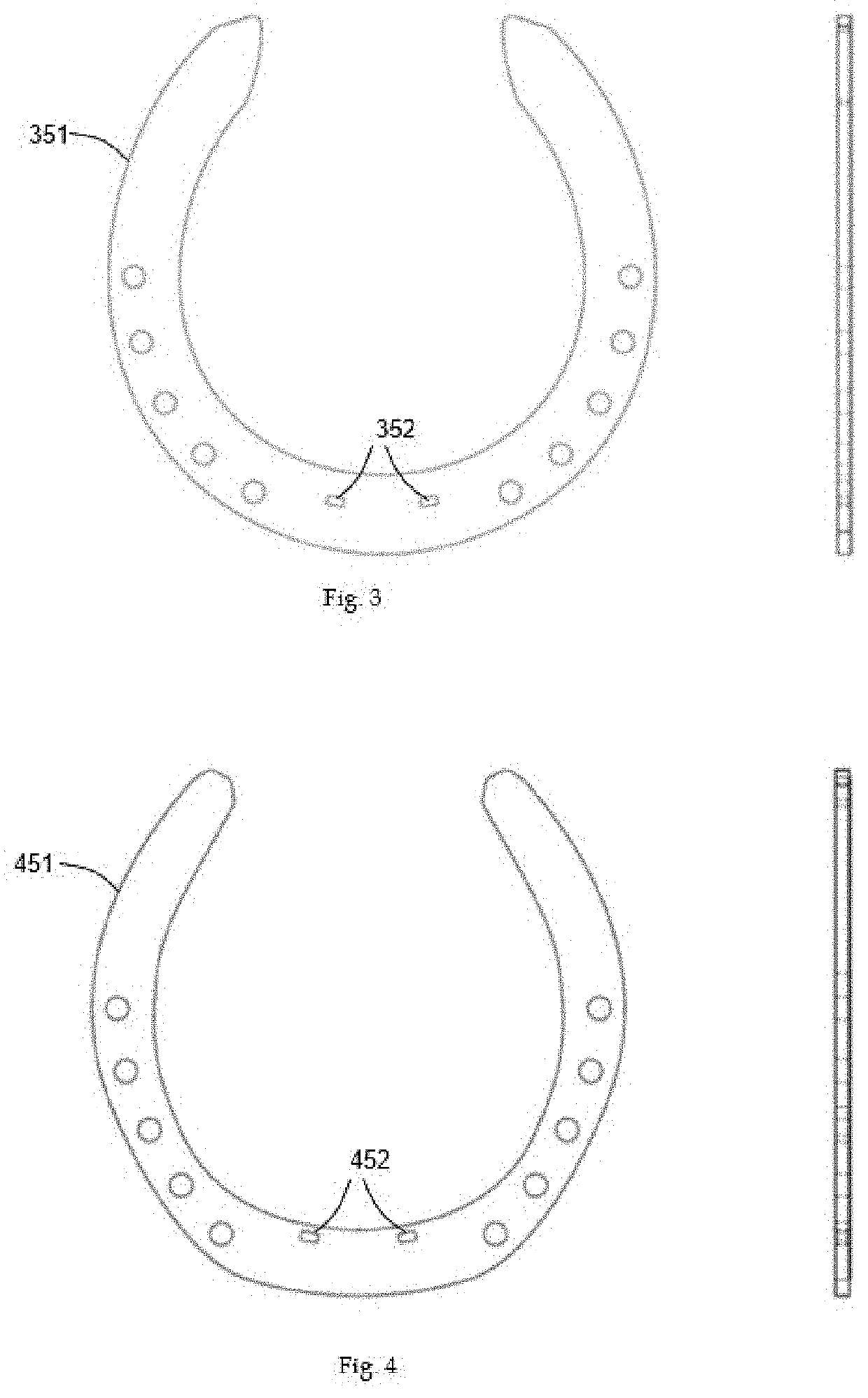Shoe for horses, in particular for racehorses
a technology for horses and shoes, applied in the field of horseshoes, can solve the problems of affecting the performance of horses, the shoes available today are not optimal, and the aluminum shoe is easily abrasion-resistant,
- Summary
- Abstract
- Description
- Claims
- Application Information
AI Technical Summary
Benefits of technology
Problems solved by technology
Method used
Image
Examples
example
[0093]Especially good test results were shown by horseshoes containing a 2 mm thick core made from alternating carbon fiber and glass fiber layers embedded in a thermoplastic polycarbonate matrix, this core of fiber and PC matrix material being covered with a functional layer likewise made of thermoplastic polycarbonate, which is reinforced advantageously with short fibers. This ensures a minimal abrasion. The lifetime is over 6 weeks. The technical data for this especially advantageous horseshoe are as follows:[0094]Core: carbon fiber and glass fiber layers in polycarbonate matrix (total around 2 mm thick)[0095]Functional layer: polycarbonate with short fibers made of glass[0096]Manufacture: 1. hot pressing method to produce the composite material of the core[0097]2. thermoplastic injection molding process for overmolding the core with functional layer material[0098]Weight: around 60 grams (for size 6)[0099]Use: cold fitting similar to horseshoes made of alternative material (such ...
example 2
[0115]Further good test results were shown by horseshoes made from fiber-reinforced thermoplastic polycarbonate (i.e. fiber-reinforced thermoplastic polycarbonate full material), which is reinforced with 30 wt. % glass fibers and 20 wt. % carbon fibers. The fibers used for this are advantageously short fibers. This ensures a minimal abrasion. The lifetime is over 6 weeks. The technical data for this especially advantageous horseshoe are as follows:[0116]Material composition: polycarbonate matrix with short fibers made of glass and carbon: 50 wt. % polycarbonate with 30 wt. % glass fibers and 20 wt. % carbon fibers.[0117]Manufacture: thermoplastic injection molding process[0118]Weight: around 60 grams (for size 6)[0119]Use: cold fitting similar to horseshoes made of alternative material (such as aluminum), incl. possibility of hot deformation for individual adaptation to the particular horse' hoof[0120]Benefits: —very light horseshoe (weight reduction around 50% compared to aluminum ...
PUM
| Property | Measurement | Unit |
|---|---|---|
| length | aaaaa | aaaaa |
| wt. % | aaaaa | aaaaa |
| wt. % | aaaaa | aaaaa |
Abstract
Description
Claims
Application Information
 Login to View More
Login to View More - R&D
- Intellectual Property
- Life Sciences
- Materials
- Tech Scout
- Unparalleled Data Quality
- Higher Quality Content
- 60% Fewer Hallucinations
Browse by: Latest US Patents, China's latest patents, Technical Efficacy Thesaurus, Application Domain, Technology Topic, Popular Technical Reports.
© 2025 PatSnap. All rights reserved.Legal|Privacy policy|Modern Slavery Act Transparency Statement|Sitemap|About US| Contact US: help@patsnap.com



